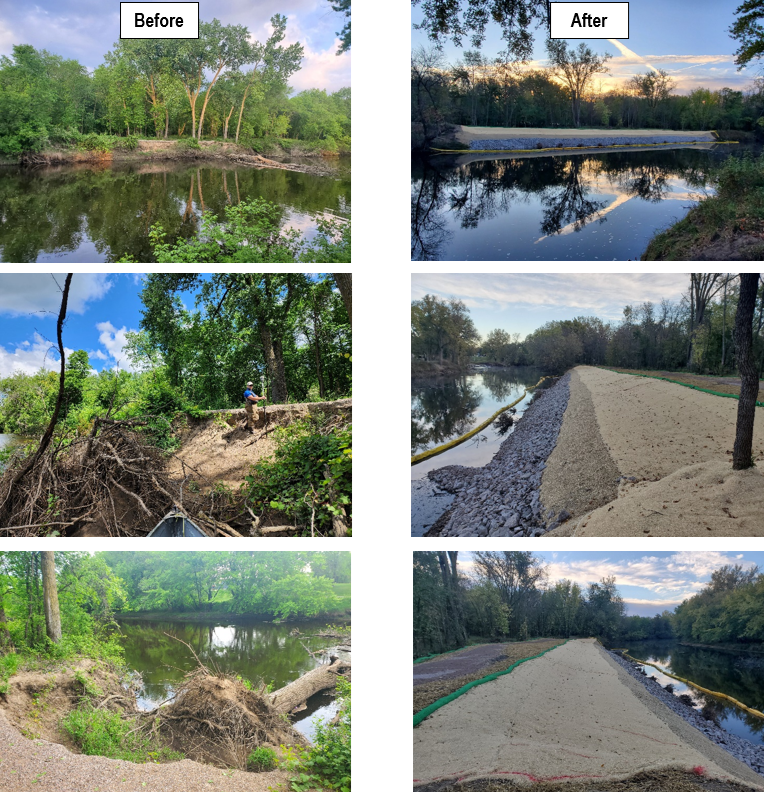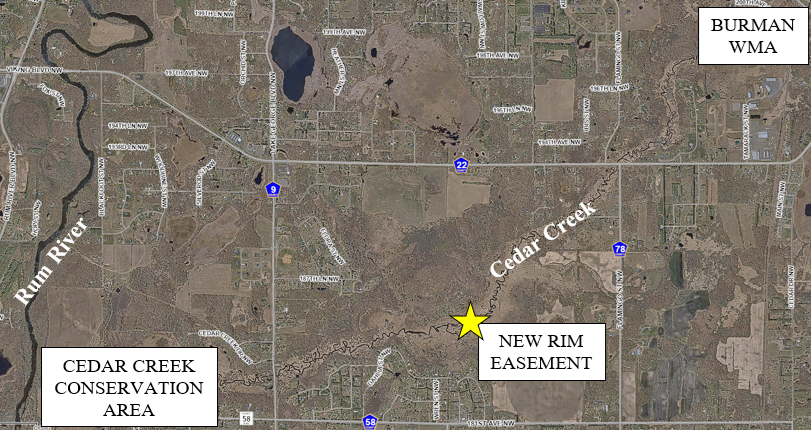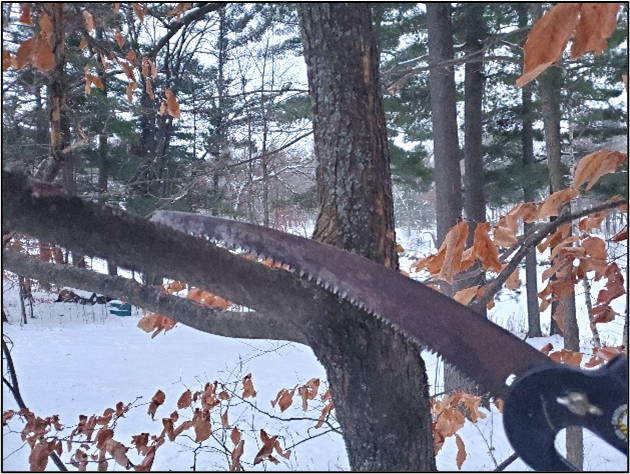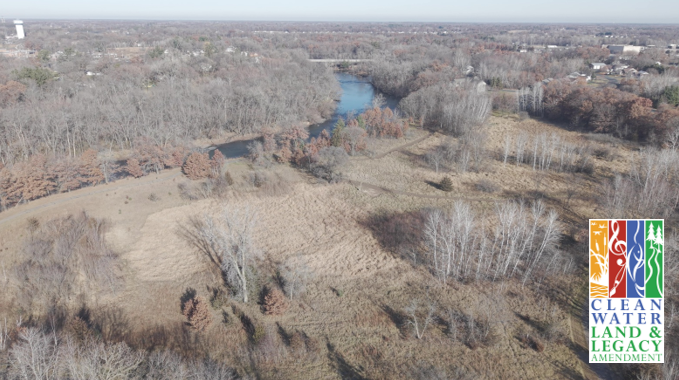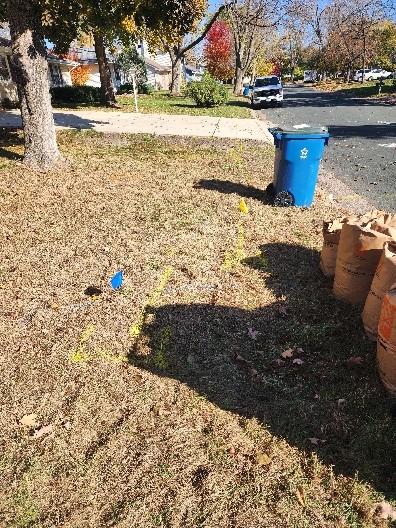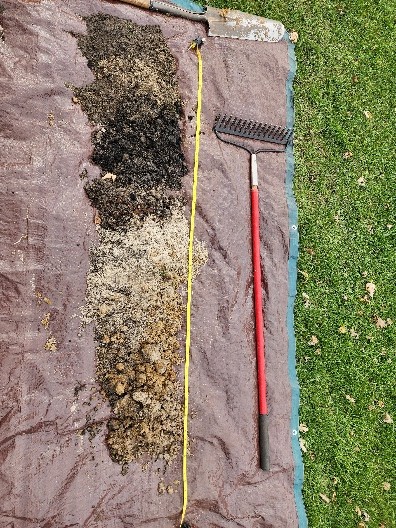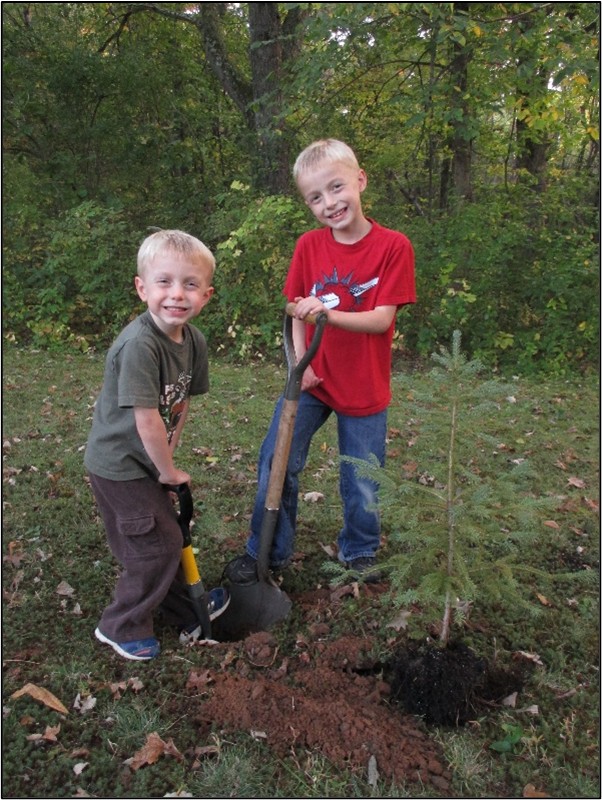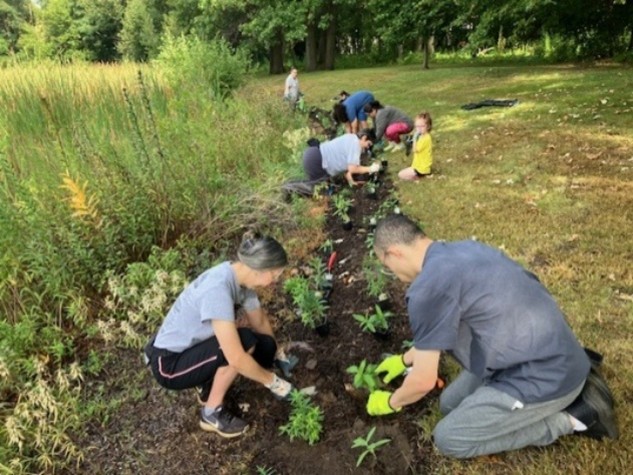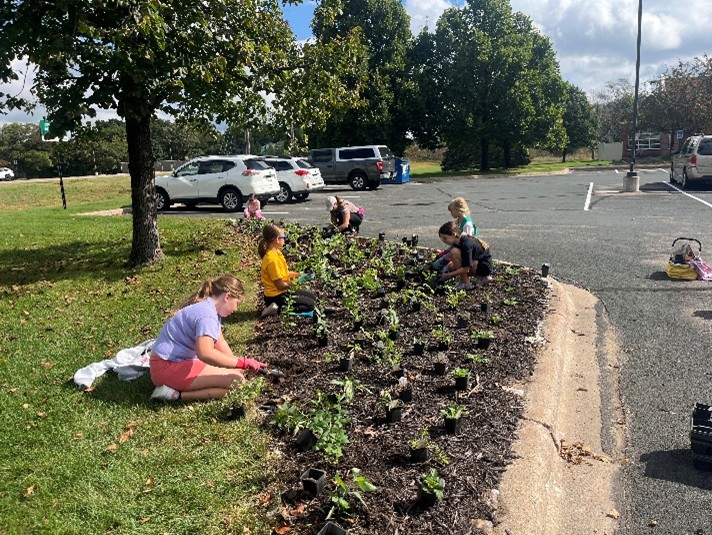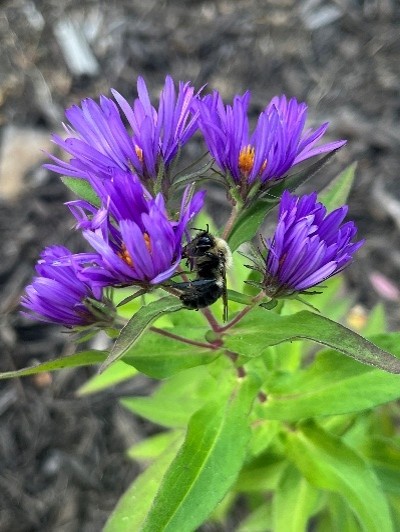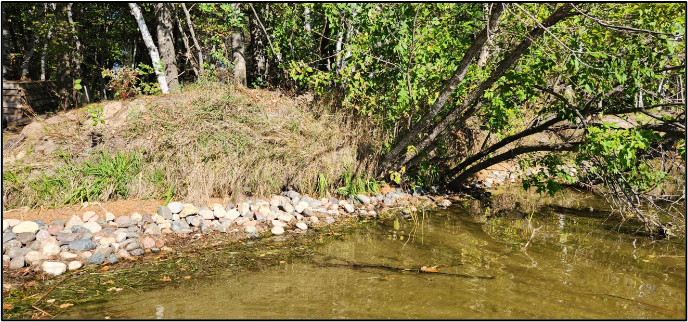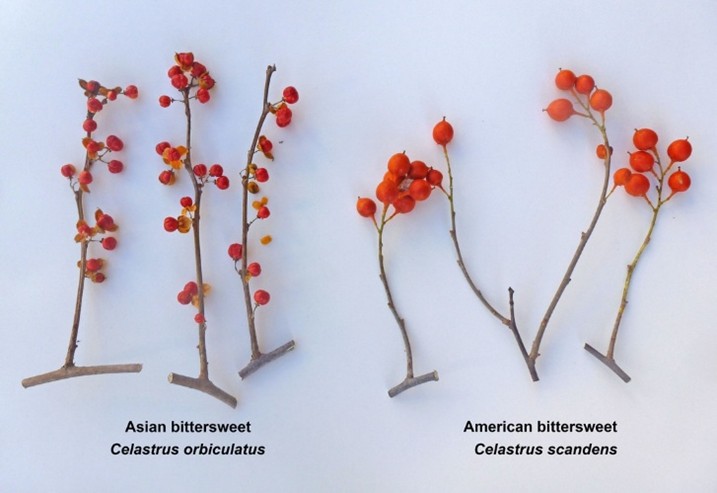ACD, in collaboration with the City of Princeton, completed a 300-foot riverbank stabilization in the city's popular Riebe Park. The project offers benefits to water quality, habitat, and new recreational opportunities. This segment of the Rum River had a severely eroding shoreline because of the erosive forces generated by the convergence of the main stem and the West Branches.
The project involved grading the slope, installing root wads, constructing small rock weirs, and planting native vegetation. The floodplain bench on the new shoreline offers a "pressure relief valve" for floodwaters while also making the riverbank more walkable. The new habitat features are designed to protect the bank while also creating areas in the river that attract game fish. Funding for this project is provided by the City of Princeton and the Outdoor Heritage Fund under the Clean Water, Land, and Legacy Amendment.
Before the project, the riverbank was severely eroding and offered no meaningful habitat or public access. Post-project features a stable riverbank, in-stream habitat, and walkable terrain. Note: Tree planting to reforest the riverbank had not yet occurred at the time of these photos. For more information, contact Jamie Schurbon, Watershed Project Manager, at

